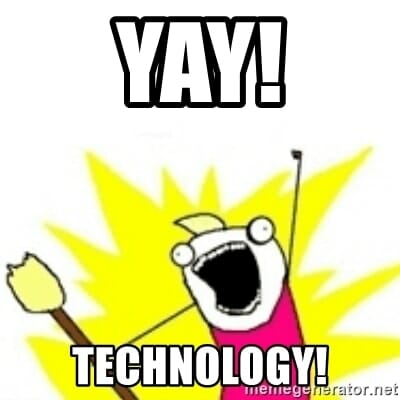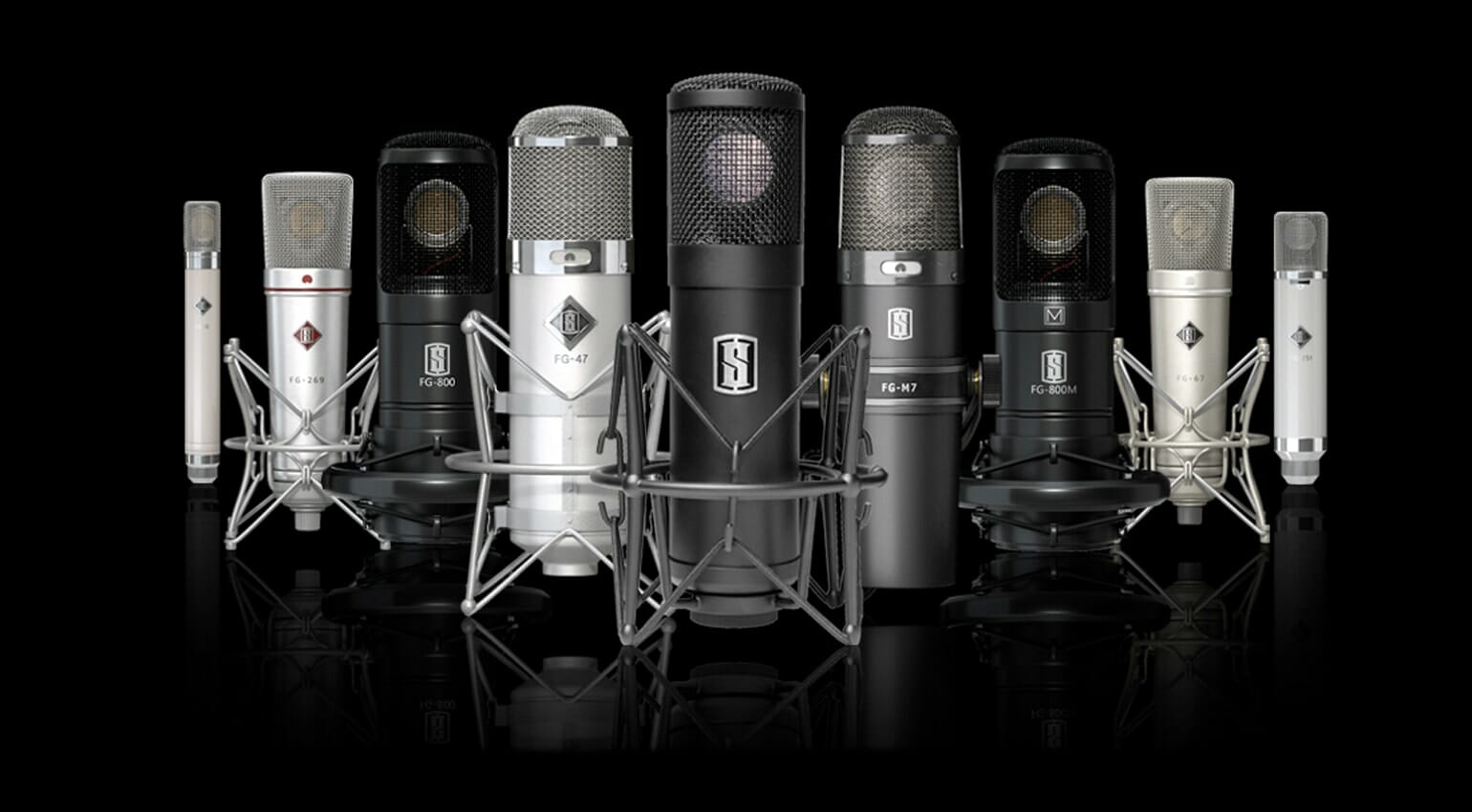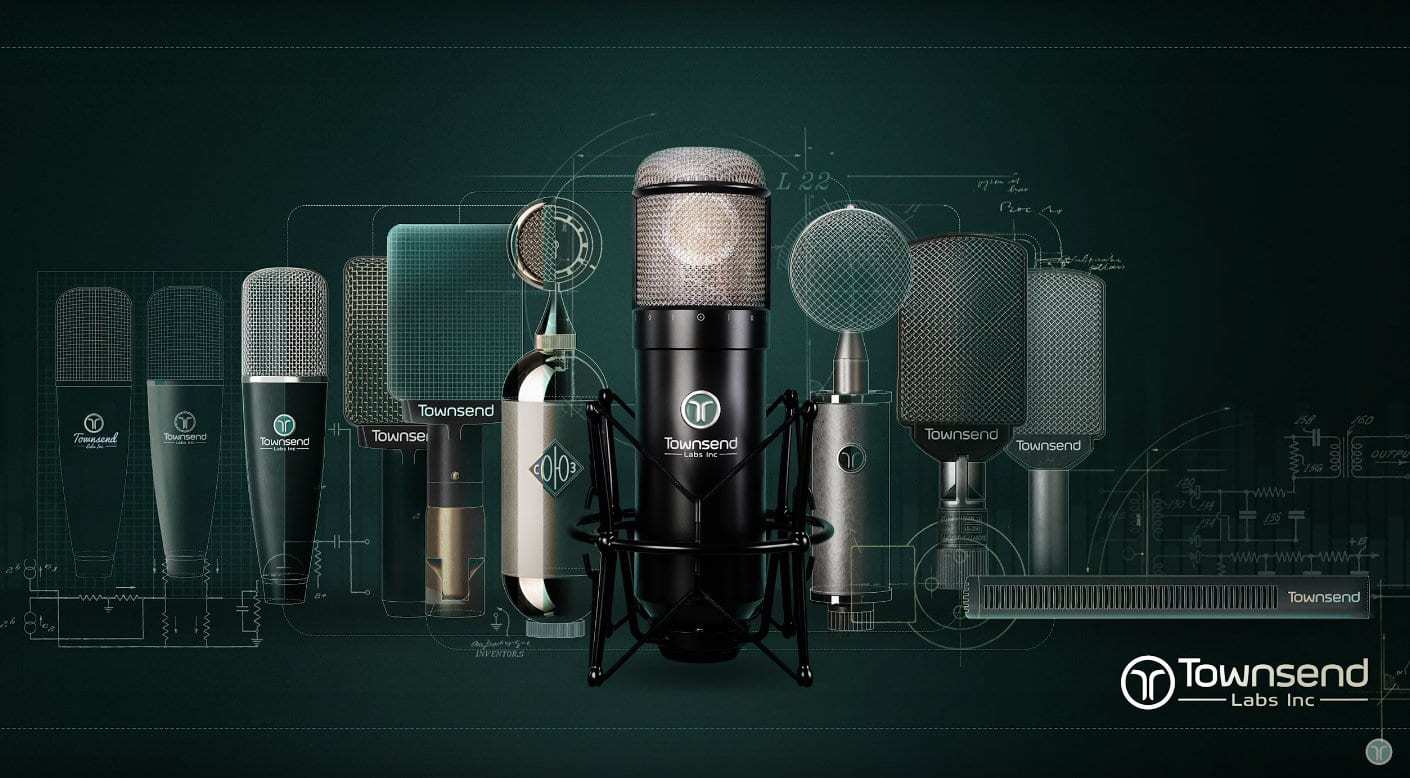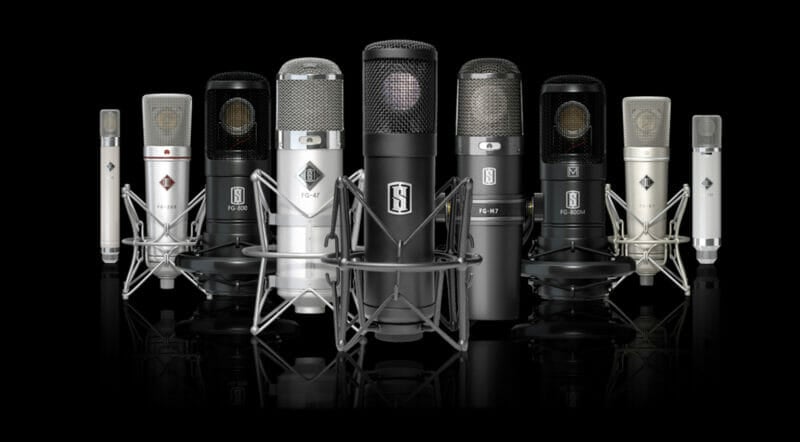Modeling microphones might be the best option out there, especially if you’re a home studio musician. But what are modeling microphones? Are they any good? And is a modeling mic right for YOU?
Keep reading to learn all about the world of modeling microphones. Here’s what we’re going to cover:
- What Is A Modeling Microphone?
- Are Modeling Mics Any Good?
- What Is The Best Modeling Microphone?
- What Is The Cheapest Modeling Mic?
- Can’t I Just Get Microphone Modeling Software?
- Is Mic Modeling Right For You?
But if you want to learn about modeling mics specifically, keep reading.
What Is A Modeling Microphone?
Most mics are one-trick ponies, meaning each one gives you a very specific tone or character.
But for many recording engineers, one mic isn’t enough.
Different types of mics are considered “better” for recording some sources than others.
And there are countless manufacturers out there making all types of mics. Shure, AKG, Neumann, Audio-Technica, MXL, Telefunken, Rode, Warm Audio… the list goes on!
This lady knows what I’m talkin’ about…

You can also just check out Sweetwater’s mic selection here to see what I mean.
But why are there so many options?
Most engineers like to have flexibility when it comes to mic selection so they can choose the best mic for the job.
For example, you might record a singer with a certain microphone, only to find that it creates too much harshness.
You could then swap out the mic for a different model that better suits the singer’s voice.
But what if you want the variety and you don’t have tens of thousands of dollars to spend on a bunch of different mics?
Enter the modeling microphone.
A modeling mic is designed to emulate many different microphones.
For example, with a modeling mic you would first record the singer.
Then, instead of physically swapping out different mics, you would virtually choose which mic you wanted to emulate by using a plugin inside the DAW.
Basically, you have instant access to a full mic locker of very expensive microphones for a fraction of the cost.

Are Modeling Mics Any Good?
The short answer, in my opinion, is a resounding “yes”. Especially for home studio musicians who want the benefit of many different mic tones for a fraction of the cost.
However, price isn’t the only factor to consider… what about efficiency?
For example:
- A traditional multi-mic owner will first record the singer with one or two mics at the same time.
- If neither of them suit the singer’s voice, the engineer will take some time to swap out the mic and test the next one.
- And if THAT mic doesn’t sound right, they’ll take a bit more time to try the next one.
- Then the NEXT one.
- And the next one.
- And… well, you get the idea.
Modeling mic owners don’t have to do it this way.
When the character of the mic doesn’t play nice with the singer or doesn’t fit well in context with the rest of the track, you can simply change the emulated mic model right inside the DAW.
No PHYSICAL mic swap happens, just a much quicker VIRTUAL one.

If you’re at all worried about the accuracy of the emulations, don’t be.
Of course modeling can’t replicate the real-life versions of mics EXACTLY, but the differences are negligible.
Look at it this way, the fact that you didn’t use a real Sony C800 will NEVER be the reason someone turns off your music.
Don’t believe me? A quick YouTube search will bring up plenty of shootouts. Here’s one of them:
What Is The Best Modeling Microphone?
Just like most answers to the “what is the best XYZ” question, IT DEPENDS.
What’s the best modeling mic for YOU?
Ultimately, you’ll have to decide for yourself. But here are my personal top three picks:
Slate Digital Virtual Mic System

Slate Digital offers two mic choices: The ML-1 and the ML-2.
- The ML-1 is a large diaphragm condenser that includes 8 mic emulations and options to purchase additional expansion packs.
- The ML-2 is a small diaphragm microphone that’s switchable between condenser and dynamic modes. It includes 18 mic emulations.
Both of these mics are intended to be used with the Slate VMS-One Preamp, which according to Slate “provides the ultimate reference signal for the Slate Digital mic and preamp modeling software”. However, the preamp is not a necessity.
I personally use both of the Slate Digital mics WITHOUT the VMS-One preamp and I have been incredibly happy with the results.
The variety of tonal options is more important to me than having 100% accuracy of the emulations.
Again, no one is going to shut off your music because your mic emulations are slightly inaccurate.
You can learn more about Slate Digital Modeling Microphones here.
Townsend Labs Sphere L22

Townsend Labs Sphere L22 comes with a whopping 34 mic emulations right out of the box, with options to purchase additional expansion packs.
You can change the polar patterns of the mic and even activate “Dual Mode” which allows you to record in stereo with just the one physical microphone.
Pretty nifty for drum overheads or stereo acoustic guitar recordings!
You can learn more about the Sphere L22 here.
Antelope Audio Modeling Microphones

Antelope Audio offers a few different mic modeling options: Edge, Verge, Edge Go, and Axino.
- Edge is a large diaphragm condenser with 18 mic models. There are a few different price tiers that offer additional features such as the ability to change polar patterns, record in stereo like the Townsend Labs mic, or even record in 360 degrees with the Edge Quadro!
- Verge is a small diaphragm mic with 12 mic emulations.
- Edge Go and Axino models are pretty interesting. They are USB mics that include emulations, built-in effects, a headphone jack, and more. It’s basically a modeling mic and an audio interface all in one. This could make it a great choice for musicians who are frequently on the go.
You can learn more about Antelope Audio’s modeling mics here.
And if you want to go really deep with comparing all three of these companies, you can check out Sweetwater’s Virtual Mic Shootout here.
What Is The Cheapest Modeling Mic?
Here are all the mics previously mentioned in order of affordability, as of October 2021:
- Slate ML-2: $149
- Antelope Audio Verge: $149
- Antelope Audio Axino: $399
- Antelope Audio Edge Solo: $695
- Slate ML-1: $799
- Antelope Audio Edge Duo: $1,095
- Antelope Edge Go: $1,295
- Townsend Labs Sphere L22: $1,499
- Antelope Audio Edge Quadro: $2,495
Can’t I Just Get Mic Modeling Software?
As an alternative to purchasing a physical modeling microphone, Antares offers a plugin called Mic Mod that allows you to use the mics you already own to emulate over 100 mic models:
Mic Mod is also more affordable than any mic on our list, coming in at $129.
Why not give it a shot?
You can download a free 14-day trial through Antares website here.
Is Mic Modeling Right For You?
I think modeling microphones are one of the best things to ever happen to the home studio musician community.
Tens of thousands of dollars in tones for a fraction of the cost? Yes please!

I personally use Slate ML-1 and ML-2 mics almost exclusively.
Mainly because I was already in love with the Slate Digital plugins, but I also really liked the idea of being able to switch the ML-2 between condenser and dynamic modes in order to handle louder sources like drums.
Since I purchased my modeling microphones, I never give one thought to spending any more money on mics.
Ever.
But that’s just me.
What about YOU?
Now that you’re armed with the information, what will you do?
Do modeling microphones tickle your fancy?
If so, what model(s) make the most sense for YOUR situation?










